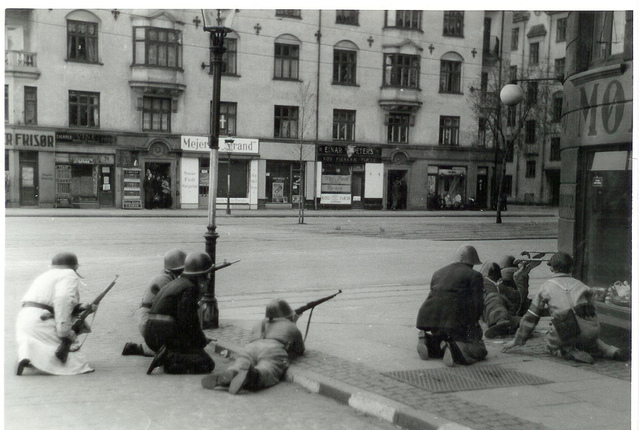Summary | Excerpt | Reviews | Beyond the Book | Read-Alikes | Genres & Themes | Author Bio

The First Gabriel Præst Novel
by Amulya MalladiThis article relates to A Death in Denmark
 Amulya Malladi's A Death in Denmark takes place in the country of Denmark in the north of Europe, which is comprised of the Jutland peninsula and an archipelago of over 400 islands. To the south, Denmark shares a border with Germany. On its west side, it is separated from the United Kingdom by the North Sea. The Baltic Sea and Sweden lie to its east. Together with Sweden and Norway, it makes up the region commonly known as Scandinavia.
Amulya Malladi's A Death in Denmark takes place in the country of Denmark in the north of Europe, which is comprised of the Jutland peninsula and an archipelago of over 400 islands. To the south, Denmark shares a border with Germany. On its west side, it is separated from the United Kingdom by the North Sea. The Baltic Sea and Sweden lie to its east. Together with Sweden and Norway, it makes up the region commonly known as Scandinavia.
A constitutional monarchy, Denmark has one of the best standards of living in the world, a competitive economy based on service with a high employment rate, and an efficient social security system. Queen Margrethe II, its current head of state, hails from one of the world's longest unbroken lines of monarchs. Its current prime minister is Mette Frederiksen, who in 2019 at the age of 41 became the youngest person in Denmark's history to hold this position.
Denmark has had a significant influence on European history. In the Middle Ages, the whole of Scandinavia was under the Danish monarchy; however, it had lost many of its territories by the end of the 19th century. Malladi's novel touches on more recent Danish history. As a European nation, Denmark was affected by both World Wars. It declared neutrality in World War I, but during World War II, it was subjected to German occupation from 1940 to 1945. The country maintained some amount of power over its own affairs until 1943, when Germany took over political control.
By this time, the resistance movement that had begun organizing in 1940 was gathering steam. Thousands joined these groups, determined to carry out campaigns and acts of sabotage against the Germans. These included publishing illegal newspapers, and destroying German property as well as that of companies that associated with the Nazis. The resistance groups are perhaps most famous for the rescue operations they undertook to smuggle Jewish residents to safety in Sweden. Most of these operations were successful, such that when the Gestapo attempted to arrest Danish Jews they could ultimately find fewer than 500 out of the approximately 8,000 who had been in the country.
However, not every non-Jewish Dane contributed to these acts of goodwill. There is evidence of there having been as many as 300,000 Nazi collaborators in Denmark (out of a total population of around four million) at the time. Some Danish citizens collaborated with the Nazis to profit out of this cooperation for personal gain. Some betrayed the location of Jews' hiding places, enabling their deportation to the Theresienstadt ghetto.
Denmark is known today to be a liberal, progressive country with free education, excellent health care programs and a great social welfare system. However, its public image has suffered in recent years from its treatment of immigrants and refugees. In the 1990s, anti-immigration stances began to rise among right-wing groups, leading to more restrictive immigration legislation. In 2005, the country became the center of controversy after a Danish paper published cartoons depicting the Prophet Mohammed. Denmark's immigration policies continue to be a central issue in its politics, and a matter of debate on the international platform.
Freedom fighters at Strandboulevarden in Copenhagen. May 5, 1945
National Museum of Denmark, via Picryl
Filed under Places, Cultures & Identities
![]() This article relates to A Death in Denmark.
It first ran in the May 17, 2023
issue of BookBrowse Recommends.
This article relates to A Death in Denmark.
It first ran in the May 17, 2023
issue of BookBrowse Recommends.
Your guide toexceptional books
BookBrowse seeks out and recommends the best in contemporary fiction and nonfiction—books that not only engage and entertain but also deepen our understanding of ourselves and the world around us.